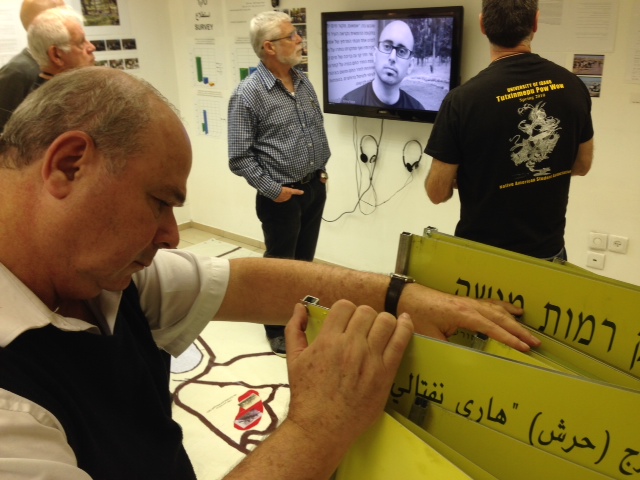Info
District: al-Quds (Jerusalem)
Population 1948: 720
Occupation date: 21/10/1948
Occupying unit: Har'el (palmah)
Jewish settlements on village/town land before 1948: None
Jewish settlements on village/town land after 1948: Tzur Hadasa
Background:
Ras Abu ‘Ammar Before 1948
The village stood on an elongated hill that stretched from southeast to northwest, surrounded on three sides by the deep Wadi al-Sarar that wound its way westward. It was also dominated by mountains on all sides, and was less than 1 km south of the Jerusalem-Jaffa railway line. A secondary road linked Ras Abu ‘Ammar to a highway that ran south of it and ran to Bethlehem. In the last nineteenth century, Ras Abu ’Ammar was described as a village built of stone on a small ridge, situated above an “open and rather flat“ valley in which the villagers planted olive trees. The village had a rectangular plan and most of its houses wer built of stone. A main street, running in a northwest-southeast direction, divided the site into two sections. During the British Mandate, new construction extended along roads connecting it to the villages of al-Qabu and ’Aqqur in the east and north, and along the highway to the south. The village had an elementary school and a few small shops in its center. The villagers, who were Muslim, maintained more than one shrine for local sages, including one for a Shaykh Abu Ammar. They relied on springs for their drinking water and irrigation.
The village lands were utilized both for agriculture and pasture. Agriculture was base on rainfed grain, vegetables, and fruit trees, including olive trees and grape vines. Irrigation of the latterwas made possible by spring water that flowed from the mountain top and accumulated in ponds. In 1944/45 a total of 2,791 dunums was allocated to cereals; 925 dunums were irrigated or used for orchards. The nearby Khirbat Kafr Sum was inhabited during the Crusader period and also during the sixteenth century.
Occupation and Depopulation
The village probably fell to units of the Israeli army’s Har’el Brigade in the course of Operation ha-Har. Israeli historian Benny Morris indicates that the village fell on 21 October 1948, as a result of a direct military assault.
Israeli Settlements on Village Lands
Israel established the settlement of Tzur Hadassa on village lands in 1960, south of the village site.
The Village Today
The stone rubble of the village houses is strewn across the site. Wild vegetation grows among the debris in addition to almond, olive, and carob trees. Cactuses grow on the southeastern and southwestern sides of the site; a two-room stone building that used to be the schoolhouse still stands to the southeast.
----------------------
Source: al-Khalidi, Walid (ed.). All that remains: the Palestinian villages occupied and depopulated by Israel in 1948. Washington DC: 1992.



